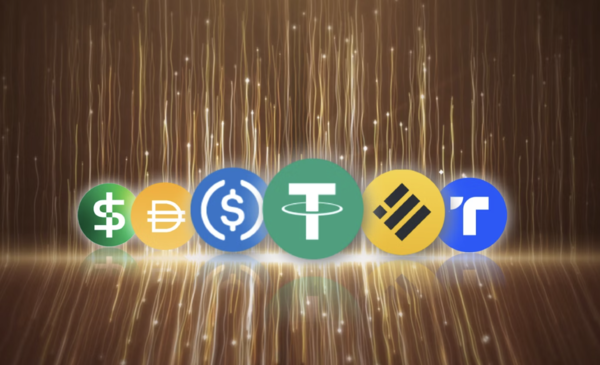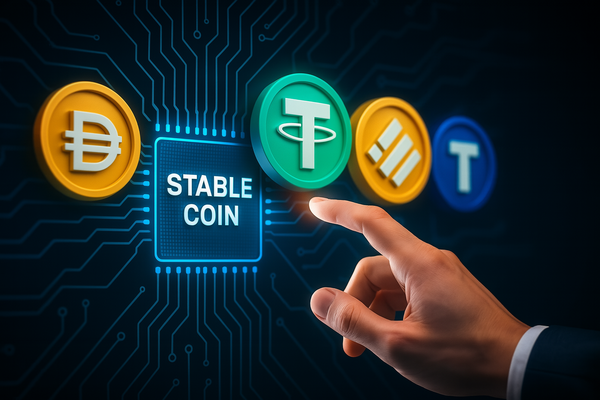Stablecoins are attracting unprecedented interest. As discussions on institutionalizing won-based stablecoins gain traction in South Korea, it may be time for Kingos to start paying more attention to this critical issue. The Sungkyun Times (SKT) takes a closer look at stablecoins, which may mark a significant turning point in the evolution of digital finance infrastructure.
Stablecoins, Now at Our Doorstep
-Getting Acquainted with Stablecoins
A stablecoin is a type of cryptocurrency whose value is pegged to a fiat currency, such as one stablecoin being equal to $1 or \1,000. They play a central role in global cryptocurrency trading and are specifically designed to maintain price stability. At present, stablecoins pegged to the United States (U.S.) dollar make up 99% of the market. While stablecoins aim to maintain a fixed value, their prices can still fluctuate slightly above or below $1 depending on market supply and demand. USDT, which is currently the most widely used stablecoin, has shown remarkable stability over the past year, with its trading price fluctuating by only around 0.4%. Launched in 2014, USDT was created to meet the needs of cryptocurrency investors who struggled to cash out their assets and sought a reliable way to avoid constant exposure to volatility. Looking ahead, the British multinational bank Standard Chartered forecasts that the global stablecoin market, currently valued at $230 billion or about \320 trillion this year, will grow to around $2 trillion or about \2,800 trillion by 2028. The era of stablecoins is waiting outside, ringing the doorbell, eager to step inside.

-Keep an Eye on Stablecoin Trends
The Trump administration has expressed a firm intention to secure U.S. dominance in the global digital asset market and promote stablecoins as a means of strengthening the dollar’s status as the world’s reserve currency. In July this year, the GENIUS Act — short for Guiding and Establishing National Innovation for U.S. Stablecoins Act — was passed by both the Senate and the House, setting forth regulations on the issuance and circulation of stablecoins. Major economies such as the European Union, Japan, and Hong Kong are making efforts each in their own way to integrate stablecoins into their regulatory frameworks. In South Korea, growing interest in won-based stablecoins — mainly stemming from President Lee Jae-myung’s campaign pledge — has led the ruling party to propose several related bills. The government’s push to promote won-based stablecoins is driven by a desire to enhance the competitiveness of Korea’s digital asset market and to respond to the Trump administration’s use of dollar-based stablecoins as a tool for expanding the U.S. economic dominance.
The Dual Nature of Stablecoins
-The Upgraded Money of the Future
Stablecoins are expected to serve as a digital bridge connecting the traditional financial system with the world of cryptocurrencies, with key advantages such as price stability and broad usability. Unlike highly volatile assets like Bitcoin, stablecoins are designed to maintain a steady value. As stablecoin issuers are required to hold government bonds as collateral, this structure helps reinforce price stability by backing each coin with secure, low-risk assets. In the meantime, stablecoins offer global accessibility, allowing people in countries with underdeveloped banking infrastructure to participate in the financial system and gain greater economic stability and freedom. For these individuals, sending money abroad through traditional channels often involves high fees, exchange rate losses, and multi-day delays. In contrast, stablecoins enable fast, lowcost transfers via smartphone wallets, with no need for a bank account. South Korea’s new policy introducing a won-based stablecoin aligns with these benefits. Proponents of stablecoins argue that they can promote the use of the Korean won in digital and cross-border transactions, thereby reinforcing monetary sovereignty.

-Stability Does Not Eliminate Risk
Although often praised as the money of the future, stablecoins are not entirely risk-free. One of the most concerning risks is the potential for a coin run — a mass withdrawal of digital assets. If holders rush to sell their stablecoins during a sudden crisis, the issuer may be forced to liquidate large amounts of its reserve assets, triggering significant shocks in the financial market. Indeed, a notable depegging event, where the stablecoin’s value deviates from its underlying asset, occurred in March 2023 due to a largescale withdrawal. USDC, the world’s second-largest dollar-based stablecoin issued by the global financial technology company Circle, dropped to 87¢ when Silicon Valley Bank (SVB) went bankrupt, where a part of its reserves was kept. Fears that some of the funds deposited in SVB might not be recovered led to a sharp decline in its value. Others have expressed concern that stablecoins could be exploited for criminal activity. Their anonymity and the ability to bypass customer identification and anti-money laundering procedures make them highly susceptible to use in illicit financial transactions. In particular, skepticism is growing over the effectiveness of the won-based stablecoin. In an interview with the SKT, a research associate in finance noted, “The limited global status of the Korean won in international settlements, along with the country’s already well-established digital payment infrastructure, could pose challenges to the widespread adoption of the won-based stablecoin.” This implies that issuing stablecoins based on a non-reserve currency like the Korean won could not gain meaningful traction in the market.
Opening the Door to Stablecoins
-What It Takes to Stay in Crypto
The foremost challenge when stablecoins reach mass adoption is to prevent a coin run. Unfortunately, the Bank of Korea has warned in its Financial Stability Report this June that there are currently no effective safety mechanisms in place to stop a stablecoin run once it begins, making it even more urgent to introduce proper safeguards going forward. In the absence of a clear solution, the Stablecoin Certification Review Committee (SCRC) — an independent U.S. authority that reviews and certifies newly issued stablecoins — could serve as a useful precedent for Korea to consider. Notably, any publicly listed company operating outside the financial sector must obtain unanimous approval from the committee before issuing stablecoins. Like the SCRC, establishing an independent review committee and implementing robust screening mechanisms could help ensure the safety of stablecoin users in advance. Furthermore, in an interview with the SKT, the research associate stated, “To prevent stablecoins from being misused for tax evasion or other illegal activities, it is crucial to establish legal frameworks tailored to Korea’s regulatory environment, ensuring greater reliability and transparency than existing global stablecoins.” Regarding the won-based stablecoin, what matters more than speed is a clear and responsible direction.

-Preventing Hollow Innovation
Despite ongoing skepticism, the true value of the won-based stablecoin lies not in the present, but in the future. The complexity of transacting in Korean won for non-Korean nationals is evident in the increasing number of foreign residents in Korea opting to receive their salaries in dollar-based stablecoins. In this context, if won-based stablecoins were more widely adopted, foreign residents could easily convert their digital assets into stablecoins and gain seamless access to a wide array of digital services in Korea. Consequently, validating the practical value of stablecoins is dependent on expanding their use across multiple sectors and cultivating a broad user base. Jung Joo-pil, director of public relations at the Korea Fintech Society, suggested in the Electronic Times that the won-based stablecoin could gain widespread appeal as a digital currency that transcends language and borders, supported by the global popularity of K-culture. By targeting global K-pop fan communities and linking the stablecoin to fan activities, it would be possible to generate demand and establish a culture-driven economic cycle in which fan engagement fuels its practical use and sustainable circulation. Currency, after all, gains value only when people voluntarily trust and actively use it.
“Stablecoins have the potential to become a cornerstone of 21st century payment systems, if issued under clear regulations,” said Patrick McHenry, former chair of the U.S. House Financial Services Committee. Although questions about the stability and trustworthiness of stablecoins persist, one thing is certain: South Korea cannot design the future without first securing the money of the future. To ensure that the won-based stablecoin does not fizzle out as yet another unfulfilled campaign promise, a serious conversation — one that goes beyond theoretical debate — is urgently needed.
